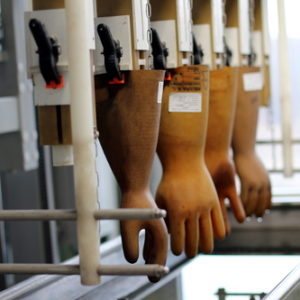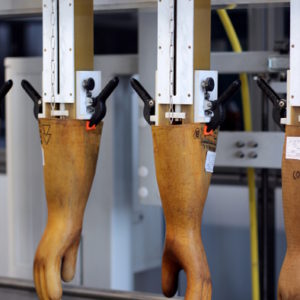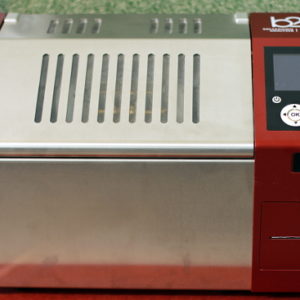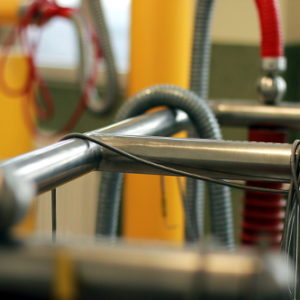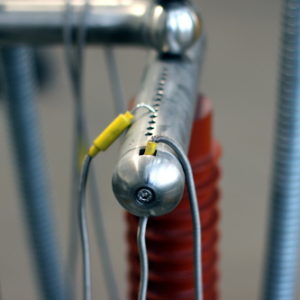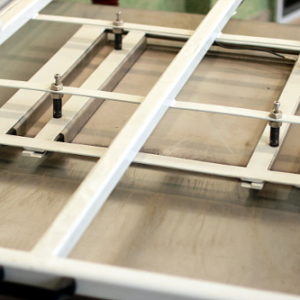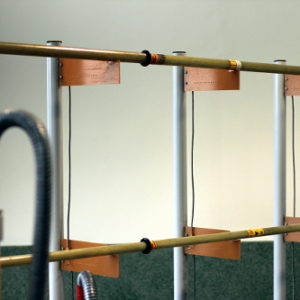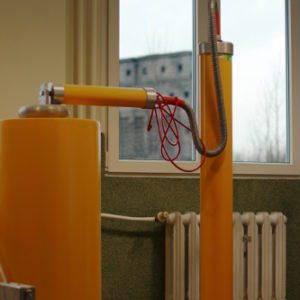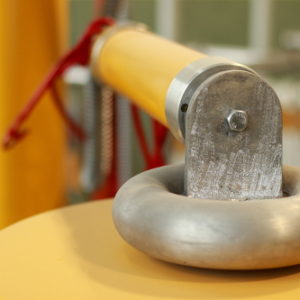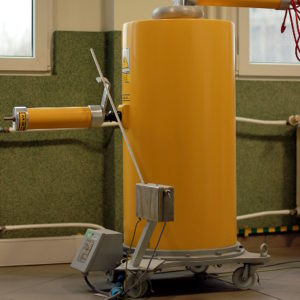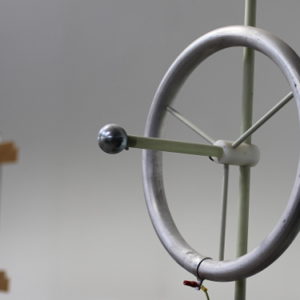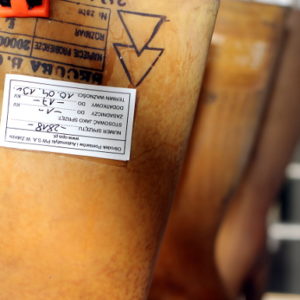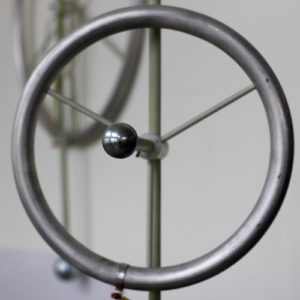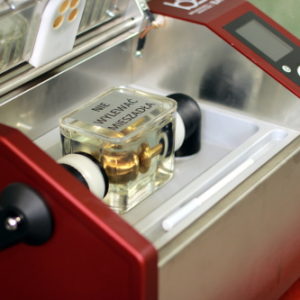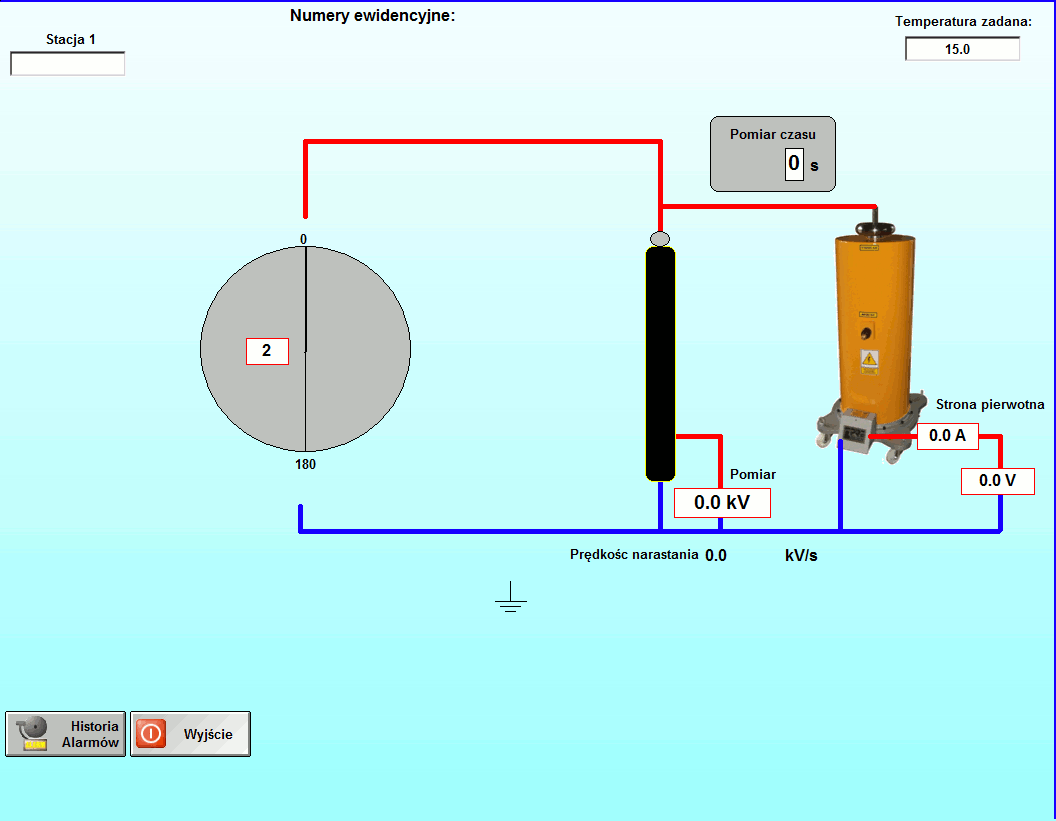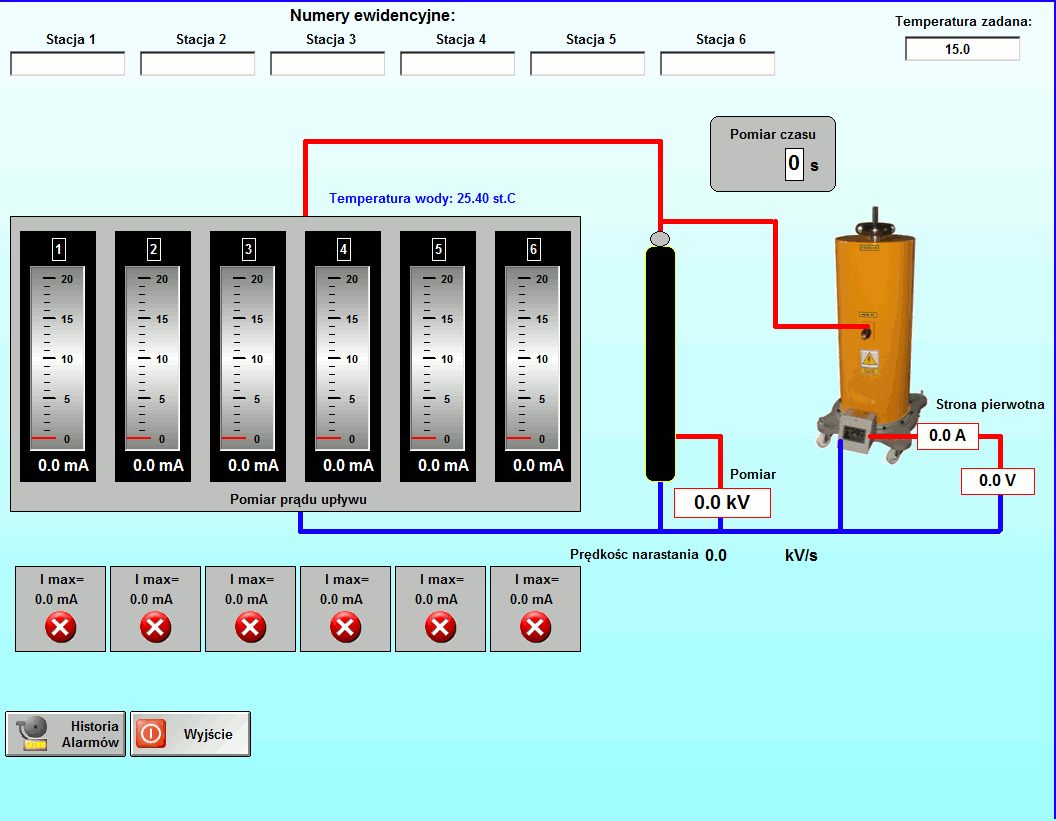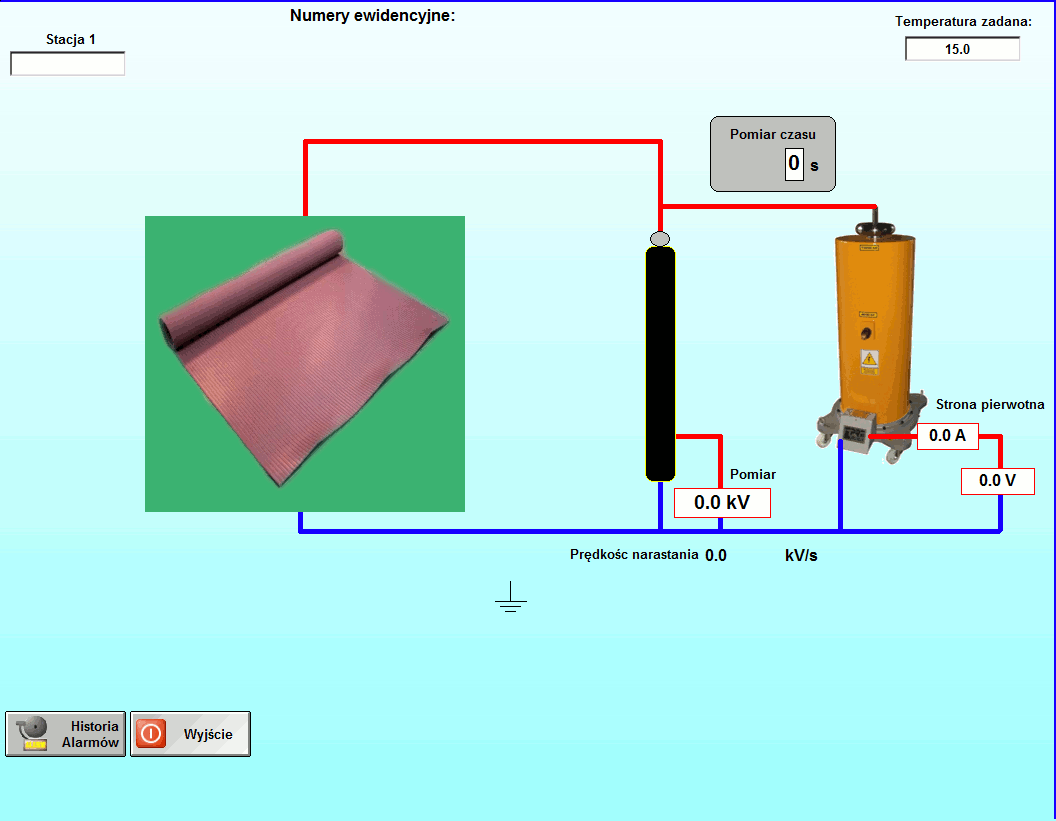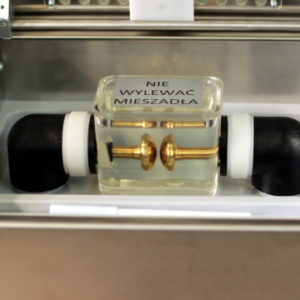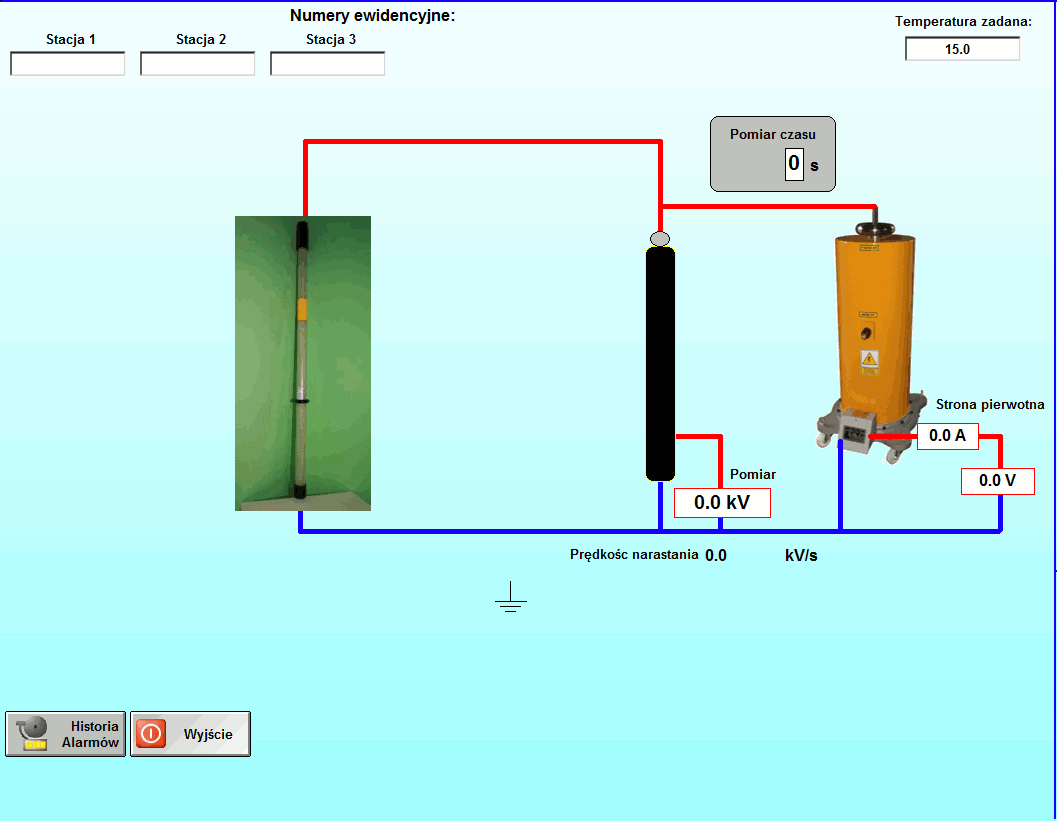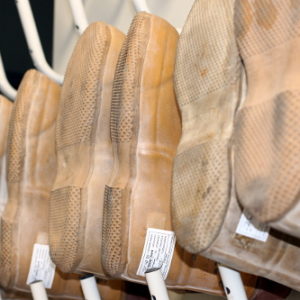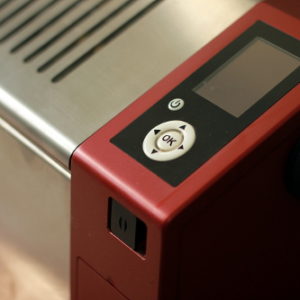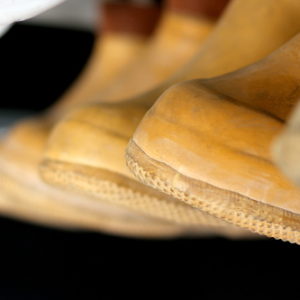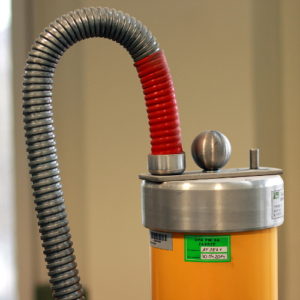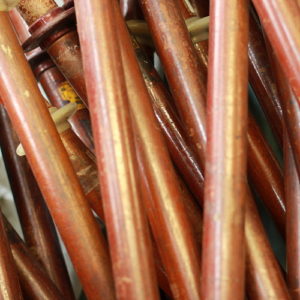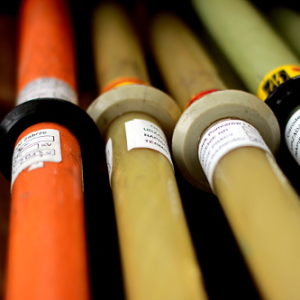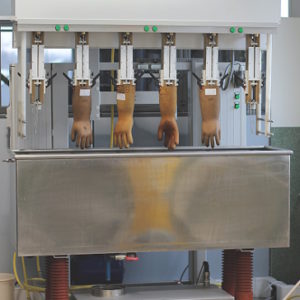TESTING LABORATORY
HIGH VOLTAGES
Our High Voltage Testing Laboratory performs tests on dielectric equipment, including:
- electrical insulating rubber equipment (gloves, wellingtons, low safety boots),
- electrical insulating matting and walkways,
- insulating sticks,
- voltage detectors,
- phase comparators,
- insulating platforms,
- ladders of insulating material;
- insulating barriers,
- insulated pliers and grippers,
- fuse holders,
and testing of:
- portable grounding devices,
- insulating oil.
We have a qualified and experienced staff who, operating in accordance with applicable procedures and quality management system instructions, perform legally required testing of protective equipment.
When carrying out our work, we rely on the following requirements:
- PN-EN 60060-1:2011 – High-voltage test techniques – Part I: General definitions and test requirements;
- PN-EN 60903:2006 – Live working – gloves of insulating material;
- PN-EN 50321-1:2018- 05 – Live working – Footwear for electrical protection – insulating footwear and overboots (English version);
- PN-EN 50321:2002 – Electrically insulating footwear for working on low voltage installations;
- PN-IEC 61111:2002 – Live working – Matting of insulating material for electrical purposes;
- PN-EN 60832-1:2010 – Live working – Insulating sticks and attachable devices – Part 1: Insulating sticks (English version);
- PN-EN 60832-2:2010 – Live working – Insulating sticks and attachable devices – Part 2: Attachable devices (English version);
- PN-EN 61243-1:1998 – Live working – Voltage detectors – Resistive type to be used for voltages of 1 kV to 36 kV AC;
- PN-EN 61243-1:2005 – Live working – Voltage detectors – Part 1: Capacitive type to be used for voltages exceeding 1 kV AC (English version);
- PN-EN 61243-3:2002 – Live working – Voltage detectors – Part 3: Two-pole low-voltage type (English version);
- PN-EN 61481: 2004 – Live working – Portable phase comparators for use on voltages from 1 kV to 36 kV AC;
- PN-EN 61478:2005 – Live working – Ladders of insulating material;
- PN-EN 61230:2011 – Live working – Portable equipment for earthing or earthing and short-circuiting;
- PN-IEC 243-1:1996 – Methods of test for electric strength of solid insulating materials – Tests at power frequencies;
- PN-EN 60893-2:2005 – Insulating materials – Industrial rigid laminated sheets based on thermosetting resins for electrical purposes — Part 2: Methods of test (English version);
- PN-EN 60893-3-2:2004 – Insulating materials – Industrial rigid laminated sheets based on thermosetting resins for electrical purposes – Part 3-2: Specifications for individual materials – Requirements for rigid laminated sheets based on epoxy resins (English version);
- PN-EN 60156:2008 – Insulating liquids – Determination of the breakdown voltage at power frequency – Test method;
- PN-EN 60247:2008 – Insulating liquids. Measurement of relative permittivity, dielectric dissipation factor (tan δ) and DC resistivity;
- technical conditions of acceptance developed by equipment manufacturers;
- technical and operational documentation of the measuring apparatus used in the High Voltage Testing Laboratory.
In order to meet the expectations of our clients, we are open to collaboration proposals and requests for quotations. We are prepared to undertake a wider range of measurement tasks for which the demand arises in the market.
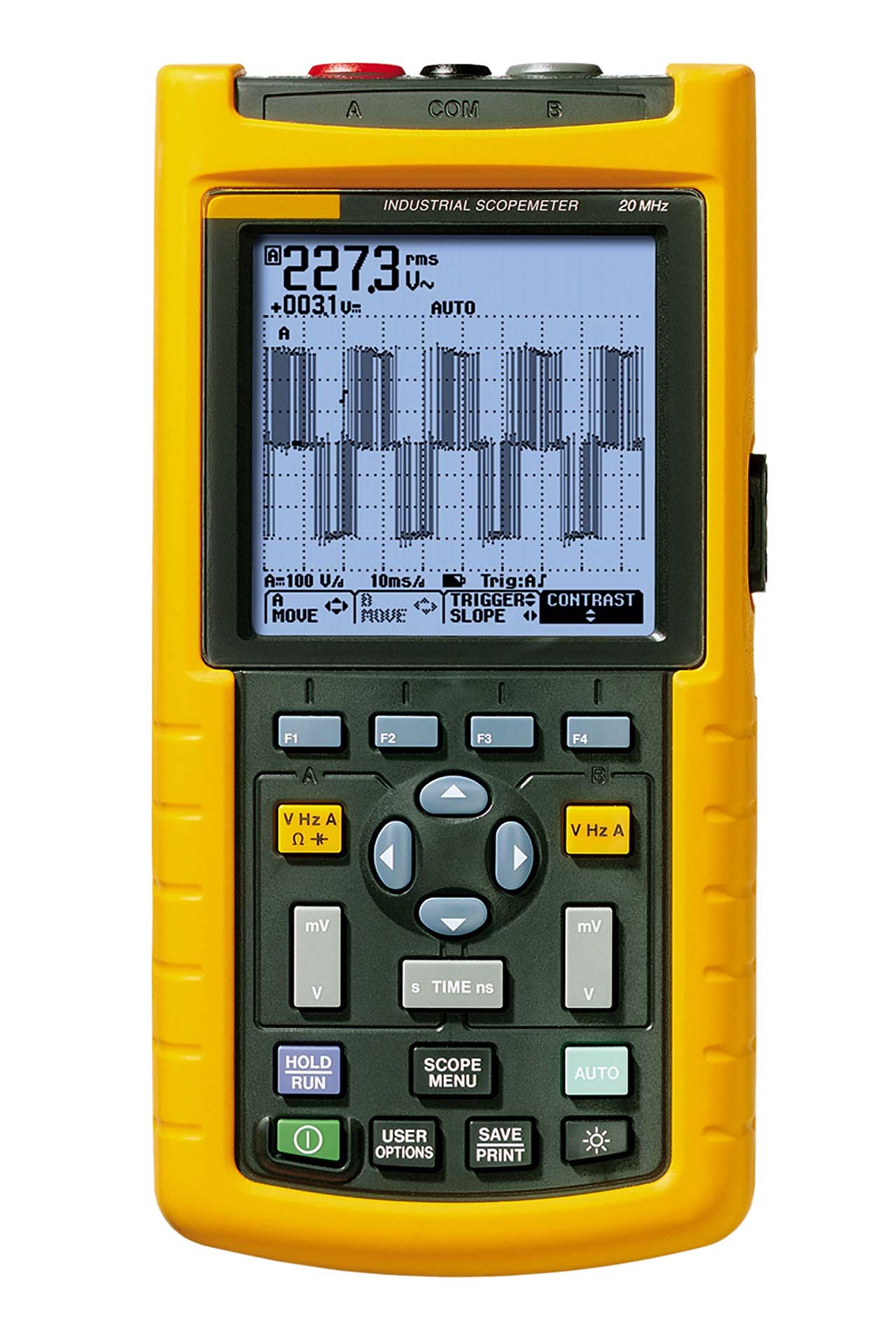
ŁUKASZ ŁYCZKO:
| CALL: | +48 502 423 313 |
| WRITE AT: | [email protected] |
MARIUSZ RZEPKA:
| CALL: | +48 502 423 314 |
| WRITE AT: | [email protected] |

